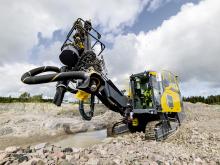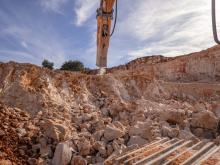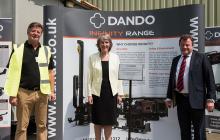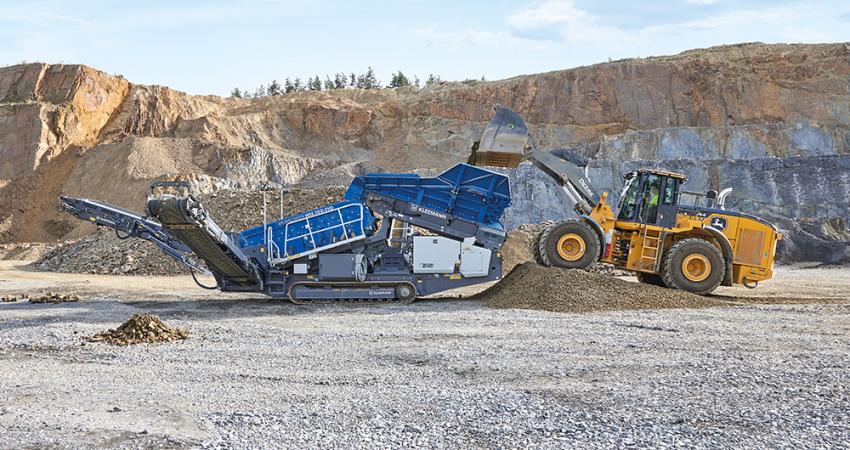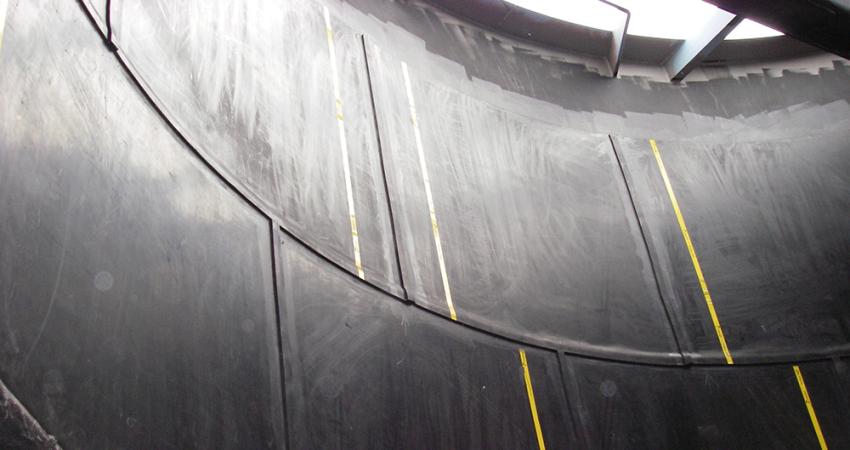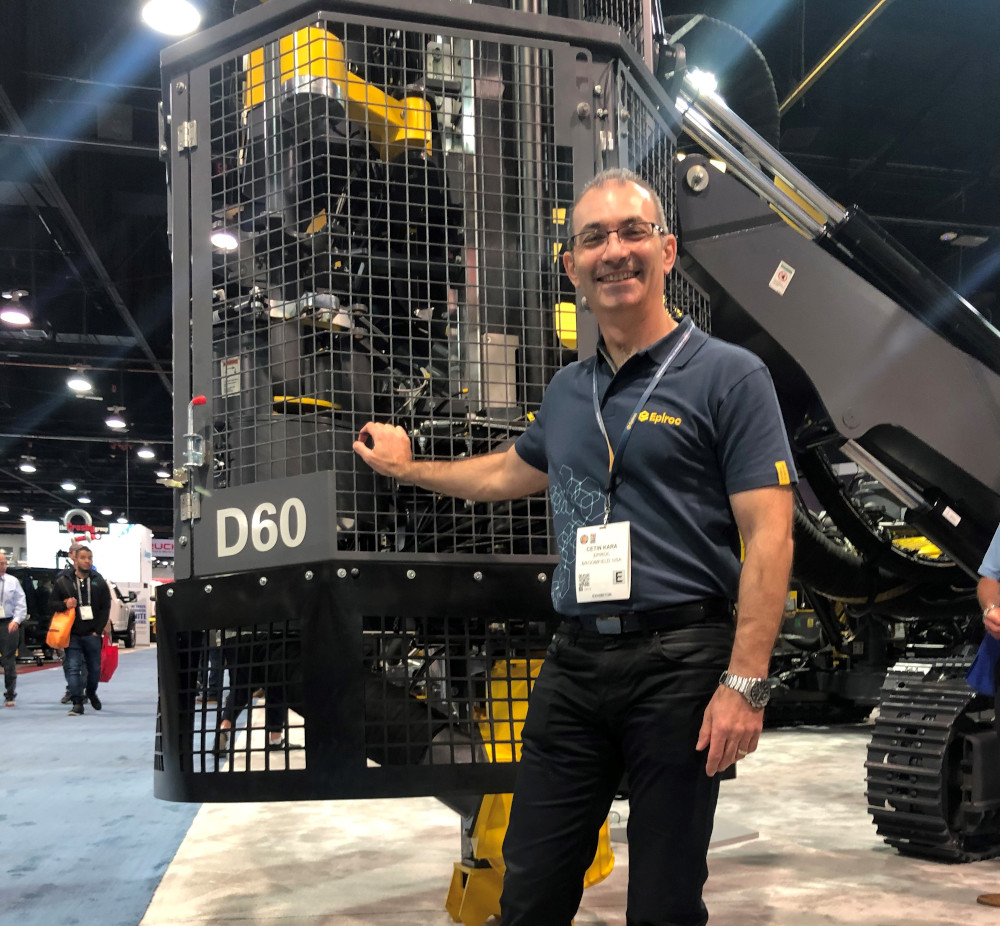
Cetin Kara is in good spirits when I meet him on the Epiroc stand at CONEXPO-CON/AGG 2020. It’s quickly apparent why. “The markets, especially the U.S. market, for crushed stone aggregates are really booming. It’s driving our business in the U.S, where we are the drill rig market leader” says Kara. “We are the top company for technology. That’s why we have a lot of innovative products. Our mission in the U.S. is to lead on top-tier products for the market, and help the customer lower their total cost of ownership.”
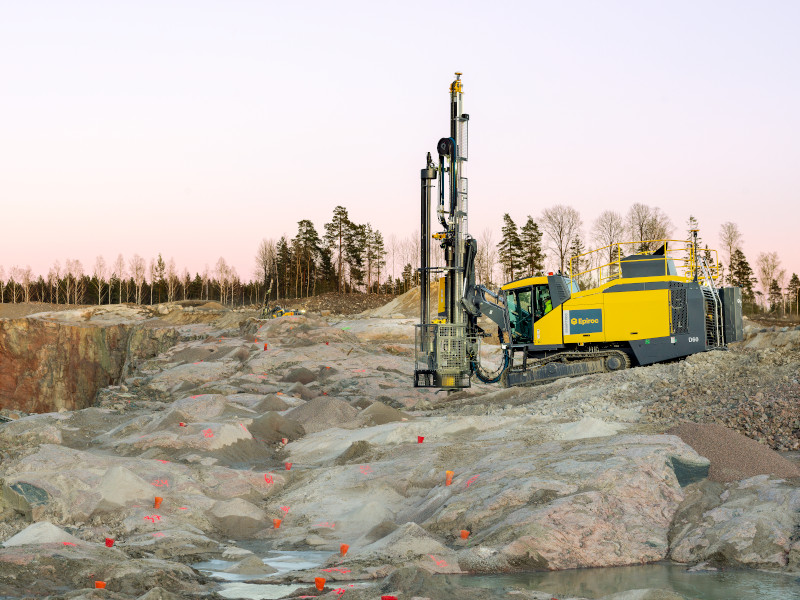
New and updated Eprioc Surface division machines and technology introduced at CONEXPO-CON/AGG 2020 included the automation-ready updated SmartROC D60 surface drill rig; the newly enhanced DM30 II SP (single pass) blasthole drill rig; the Tier 4 Final version of the PowerROC D60 surface drill rig; and the new My Epiroc digital fleet management solution, available on web and mobile devices with attractive features for increasing fleet efficiency and safety.
Epiroc also showcased HATCON, a remote-monitoring device for breakers and drum cutters that keeps track of location and operating hours to improve efficiency and safety.
The new Epiroc SmartROC D60 down-the-hole (DTH) surface drill rig for quarrying, mining and construction applications has been updated with Epiroc’s innovative automation-ready platform. The robust and dependable SmartROC D60 offers the intelligence and power to consistently and efficiently drill high-quality blast holes with accuracy and precision. It is loaded with smart features such as automated drilling and rod handling that increase safety, efficiency and consistency for a lower total cost of ownership (TCO).
The automation-ready platform also includes the new Auto Feed Fold feature. With a single action, Auto Feed Fold enables the operator to fold the feed for tramming or position it for drilling. This also comes in handy when operating one or more drill rigs remotely with the BenchREMOTE option.
“The new SmartROC D60 is designed to offer the customer better efficiency, safety and more sustainability. People visiting our stand this week have really liked the model’s design,” said Kara. “We’ve had our SmartROC machine in the U.S. market for a couple of years. Customers found the sophisticated technology a little bit scary at first, but then they saw how it ensured consistent production, that it was easy to use and how much their operators liked running the machine, as it offered an automatic drilling function. Rock-drilling tool life is also increased,” explained Kara.
“It was the mining customers who were driving the adoption of automation technology, but now the crushed stone aggregates customers want it more and more as they see the benefits. The reduced total cost of ownership gained by using the SmartROC D60, such as up to 20% more fuel efficiency than standard DTH drill rigs, gives customers a competitive edge.”
Available with a shorter boom specially designed for efficient and demanding quarry work, the SmartROC D60 can drill holes of 110mm to 178mm in diameter and to a maximum depth of 55.5 metres (m). All these features and flexibility are packed in a rig that is also more economical to run due to the intelligent control of the compressor and engine rpm. The SmartROC D60 also uses 299 litres less hydraulic oil than previous versions and features fewer hoses and pumps.
“While we are keen to promote the SmartROC technology, we appreciate that other customers prefer other products in portfolio; products that are simple to use and maintain. That’s why we have the widest product portfolio in the market.”

Epiroc’s new DM30 II SP rotary blasthole drill is said to be ideal for quarrying and small mining operations. The crawler-mounted, hydraulic tophead-drive rig offers faster hole-to-hole drilling and a lower cost per tonne through single-pass capability.
Built off the same proven platform as the Epiroc DM45 and DML blasthole drill rigs, the DM30 II SP is suitable for a variety of single-pass rotary and DTH drilling applications. The Swedish manufacturer says the model can achieve a clean hole depth of 11m for single-pass applications. The small footprint of the DM30 II makes it easy to manoeuvre on tight benches and simple to transport within the pit and over the road between pits.
The DM30 II SP offers a low total cost of ownership, with a structure design life exceeding 45,000 hours. The single-pass capability allows for faster hole-to-hole drilling and decreases the cost per tonne. Its design and layout grants quick and easy access to all major service points, simplifying maintenance.
The DM30 II SP is designed to handle 101mm-165mm drill pipes with a hydraulic pulldown of up to 133.4kN and a hole diameter of 140-200mm. An 11m single-pass tower option increases productivity for 8.85m-11m drilling conditions by eliminating the need to add a second drill steel.
Customers can choose a low- or high-pressure compressor to create the right configuration for their drilling operation.
Epiroc’s PowerROC D60 hydraulic DTH surface drill rig for mining and quarrying not only drills the largest holes in the PowerROC family, it is now equipped with an engine that meets Tier 4 Final emissions regulations to reduce its environmental footprint.
The straightforward, robust rig can drill large holes ranging from 110mm to 178mm. In addition, the 5+1 rod handling system makes it possible to drill holes down to a depth of 30m. Proven Epiroc technology also helps to ensure that holes are straight and high in quality.
Asked about Epiroc’s approach to drilling rig sales and its aftermarket business, Kara said it varies not only from country to country, but from a U.S. perspective, from state to state.
“We have direct sales and external distributor channels. If you look at America’s East Coast, there’s more quarry, crushed stone and cement applications. Then you go to the West and South-West of America and there’s more mining. It depends on states’ development plans, how much construction works they need and are allocating.”
This interview with Aggregates Business was conducted prior to the public lockdown policy being introduced globally to combat the Covid-19 pandemic.

